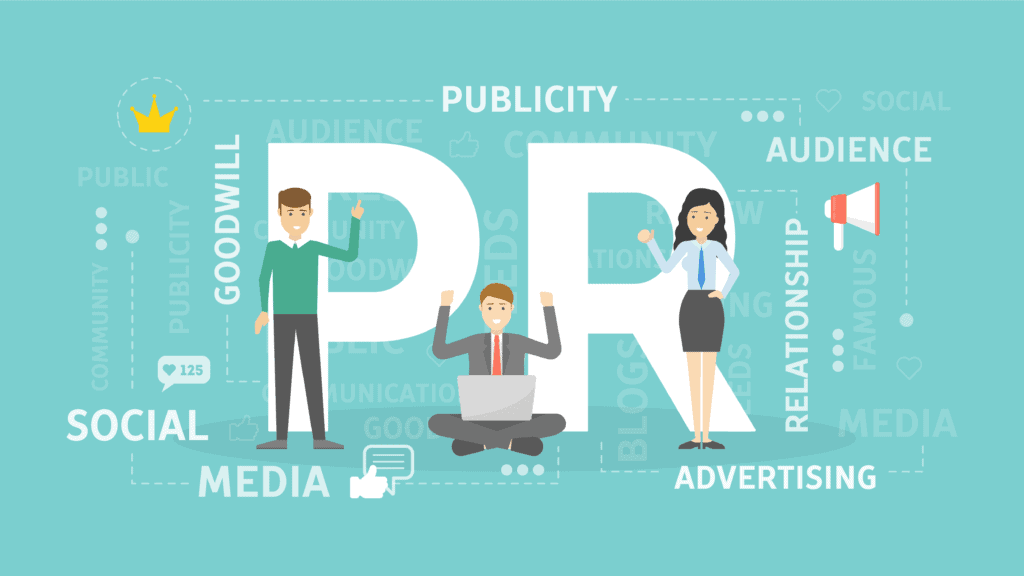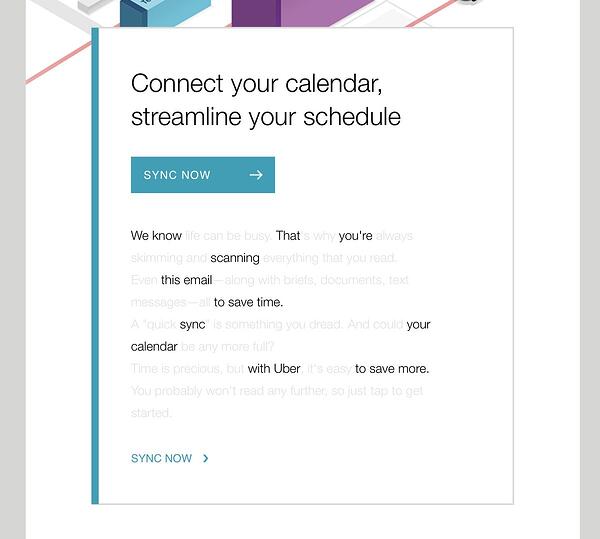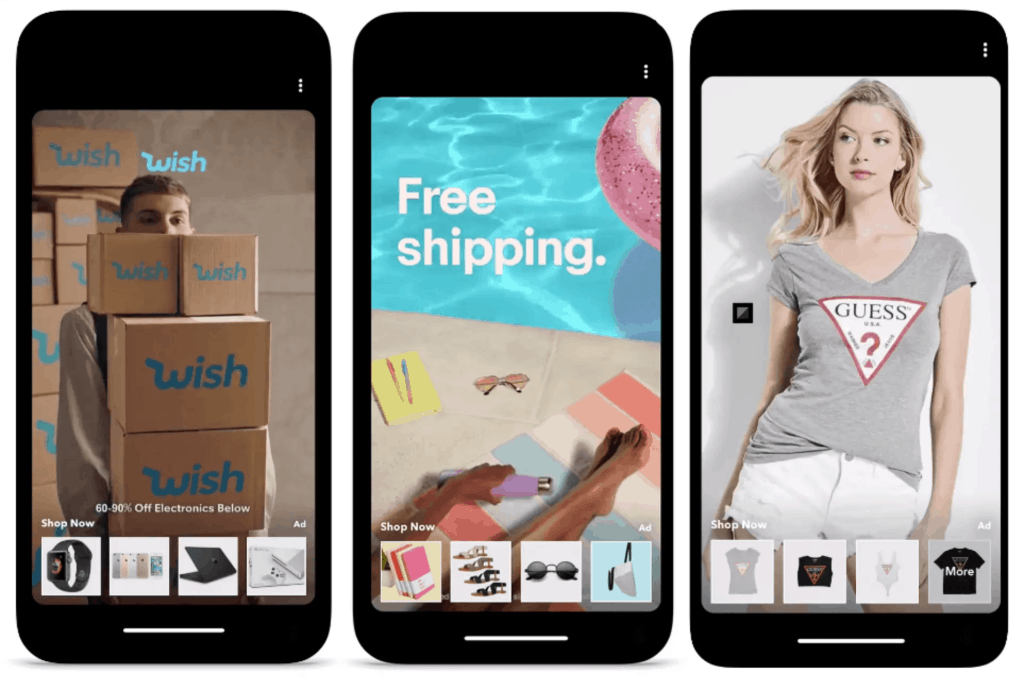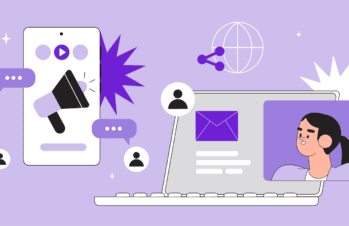When sponsored content appears alongside news items, and ads masquerade as social posts, it can be challenging to figure out where the lines are between digital marketing, PR, and advertising.
When does PR become marketing? Ads shouldn’t feel like ads, right? Aren’t all social campaigns also digital campaigns?
It’s not surprising that it’s getting harder to determine what each of these strategies looks like when they all seem to be bleeding into the other. That’s not to mention how the importance of putting out a high volume of content leads B2B brands to consistently question whether they’re effectively balancing quality with quantity.
To help clear things up, we’ve put together this guide to identify the differences between PR, marketing, and advertising, and how to decide when to employ each strategy.
What is public relations, or PR?
Public relations (PR) is, as the name implies, designed to bolster your brand’s relationship with the public. It’s a way to get your brand name out there and, most importantly, build trust.
To understand PR, you have to think about it in two different parts: the PR campaign and the results you can get from that campaign.

The PR campaign is the outreach that a media specialist or PR pro does around a specific message your brand wants to put out. For example, if your B2B brand just made a commitment to ensure that one-third of your board is people of color, you would want to get that information out to the media. Someone on your team or your B2B PR agency would send out pitches to reporters and bloggers or perhaps work with your leadership to film a video sharing the news and talking about why it’s important.
The results you could get from this are different types of media coverage. Here are a few examples:
- A news feature about your company’s commitment to diversity
- A quote from your CEO about the decision in a journal article
- An interview with a new board member on a popular blog
- A photojournalism story that features your brand
One of the most critical things to understand about PR is that it’s earned media. That means it’s something that other people, be they journalists, bloggers, or industry insiders, write about you, and your brand doesn’t have a say in what that may be.
So while your agency or PR team are the ones feeding those writers and reporters information, they don’t get to approve what is actually written or how it’s said. And there’s nothing to prevent the writer or reporter from doing their own research to support or inform the story they’re writing.
If this sounds scary to you, you’re not alone. Lots of B2B brands are wary of PR for that very reason because they’ve gotten so used to controlling their message through blogs, ebooks, whitepapers, and infographics (that’s called owned media, by the way).
However, here’s the thing you need to know: You cannot build trust with your audience through advertising (paid media) and your own content (owned media) alone.
Those are important pieces of the overall marketing puzzle, but since consumers, in general, are growing more and more distrustful of promotional content and ads, you’ve got to invest in other ways to show your audience why they should choose your B2B brand over another.
When should I use PR?
PR works best when it’s done on an ongoing basis, rather than only when you have a big product announcement or a new development.
Public relations can be employed consistently to keep your name in the public’s eye. Whether that’s providing quotes for news stories about your industry, or doing longer interviews for spotlight pieces, the more regularly your brand contributes something to a larger industry or trending conversation, the greater the chances that your audience will see you as a trustworthy, knowledgeable resource when it comes time to make that B2B purchase.
However, there are additional moments when PR can be especially useful. Here are some examples:
- Something newsworthy happens that involves your brand; you hire a new CEO, create new technology, or your firm participates in a larger industry initiative
- You launch a new product or service
- You’re expanding into a new niche or a new geographic area
- You’re rebranding
- Your brand or someone in your leadership receives an award or recognition
- Your company undergoes a merger or acquisition
- You achieve a milestone or anniversary
- You’re raising capital or preparing for an exit
- You’re involved in a crisis
Takeaways:
- PR works best when employed on an ongoing, regular basis, as it helps keep your name in the public eye.
- Since people are more distrustful of ads and promotional content than ever before, PR is a necessary element of building trust with your audience.
What is marketing?
Marketing is a broad term that covers any strategies, activities, or methods that a brand uses to communicate with potential customers.
PR is a form of marketing. Social media campaigns are a form of marketing. So too is content marketing, which itself can consist of blogging, video, podcasting, etc.
So when should you use marketing?
All the time.
When it comes to what types of marketing to use, that can be a bit more nuanced.

In general, these are the marketing strategies your B2B brand should be doing consistently:
- B2B content marketing: all your owned media—blogging, writing guest posts, making videos, hosting webinars, podcasting, etc.
- B2B social media marketing: keeping up a consistent presence on at least one social media platform. Prioritize quality over quantity, so strive for a robust presence on one or two platforms rather than spread yourself too thin over five or six.
- B2B email marketing: staying in contact with your audience through targeted, regular emails
- B2B PR: as mentioned above.
These are the marketing activities you should use as often as your resources allow, and/or for media-worthy moments like product launches, announcements, etc.:
- B2B influencer marketing: partnering with an influencer who reaches audiences in your niche, or in a niche you’re hoping to break into
- B2B video marketing: creating social videos or YouTube videos (or better yet, repurposing your YouTube videos into smaller, bite-sized social videos)
- B2B event marketing: hosting in-person brand activations, virtual panels, product demos, and more
Takeaways:
- Marketing includes PR as well as all the other methods you use to communicate with your audience and promote your company.
- Some marketing activities should be ongoing and consistent, while others are more suitable or realistic for specific company developments like leadership changes, events, new products or services, etc.
What is advertising?
Advertising is any type of paid promotion that is designed to persuade someone to buy your product or service.
From TV commercials to print ads to digital pay-per-click (PPC) ads, advertising holds an essential place in any B2B brand’s outreach and lead generation strategy.
However, it should never be your one-and-only method of reaching your audience. Remember what we mentioned earlier about consumers not trusting ads? To put a number on it: according to a 2019 study by the American Association of Advertising Agencies, 96% of people believe that advertisers do not practice integrity.
That doesn’t mean that paid advertising doesn’t have a place in your overall marketing strategy, however—far from it, in fact.

Advertising that’s paired closely with other types of marketing, like your blog posts or videos, can go a long way toward increasing your conversions.
Social ads, or paid posts as they’re often called, do an especially good job of this—you create a social post that leads to, say, a recent blog post. Then you put some money behind it and choose an audience, which puts it in front of far more people than would see it organically.
You may wonder why you need to put money behind your social posts—isn’t social media marketing supposed to be free?
Technically, it still is—but it will be much, much more effective if you have a budget in place to boost those posts.
The reason is that there is simply so much content out there, and you’re competing with all of it—not just the posts by your direct competitors, but posts about the latest political news, and fashion, and what movies you should be watching. Boosting posts is a good way to break through the noise.
When should you use advertising?
Advertising, like PR, content marketing, and social media marketing, should be an ongoing venture.
Create landing pages for specific actions you want people to take and create PPC ads to lead them there. Some examples of those actions are:
- Register for a course or webinar
- Sign up for an event
- Sign up for the email newsletter
- Download an ebook or other content
- Contact us for a product demo or consultation
- Download an app
- Start a free trial
When you’re coming up with social ads, it’s a good idea to first look at the pages on your website or blog that are getting the most traffic already. Using one of those pages in your social ad will make it more likely that you’ll get a good click-through rate (as long as you’re writing good, compelling social ad copy).
Another component of PPC and social ads is retargeting. Retargeting means that ads are targeted based on a user’s previous internet behavior. If a user visits your website or clicks one of your social posts, you can serve them relevant ads while they’re on other sites around the internet.

Here’s how it works: A user visits your website. They leave without signing up for a demo or contacting you for a consultation. However, as they browse other sites, in the hours and days later, they see ads for your site popping up. This reminds them of your site, so they return and—potentially—reach out and make their first contact with you.
Takeaways:
- Advertising is an important way to increase your lead gen and reach your B2B audience, but it should not be your primary mode of communication with potential buyers.
- Digital advertising essentially consists of two types: PPC and social.
- Both can be used to encourage users to take specific actions and/or to increase website traffic.
PR, marketing, and advertising are all critical components of effective outreach for B2B tech companies. By using each strategically, and investing on an ongoing basis, you can reach more people, convince more B2B buyers, and—just as importantly—strengthen your relationship with those buyers so they continue to come back to your brand.
Related Reading: Public Relations for B2B Tech Companies: In-house or Outsource?







